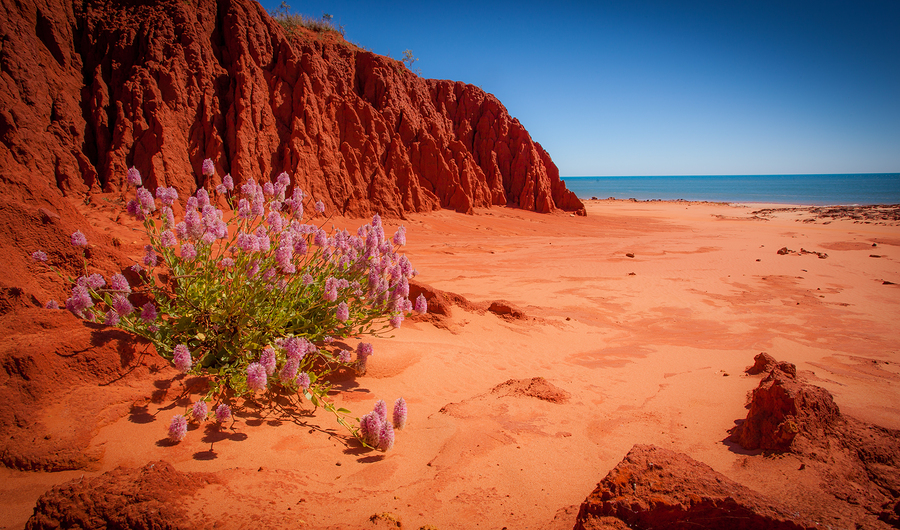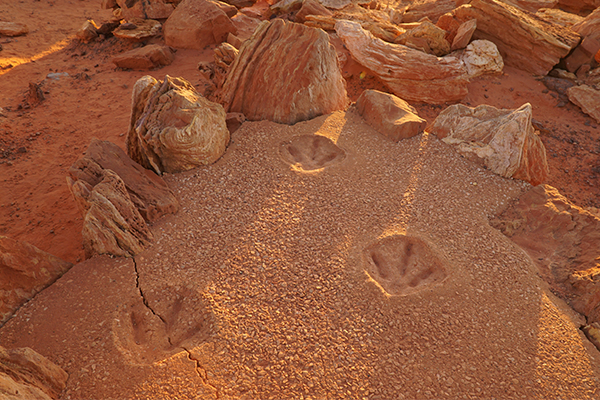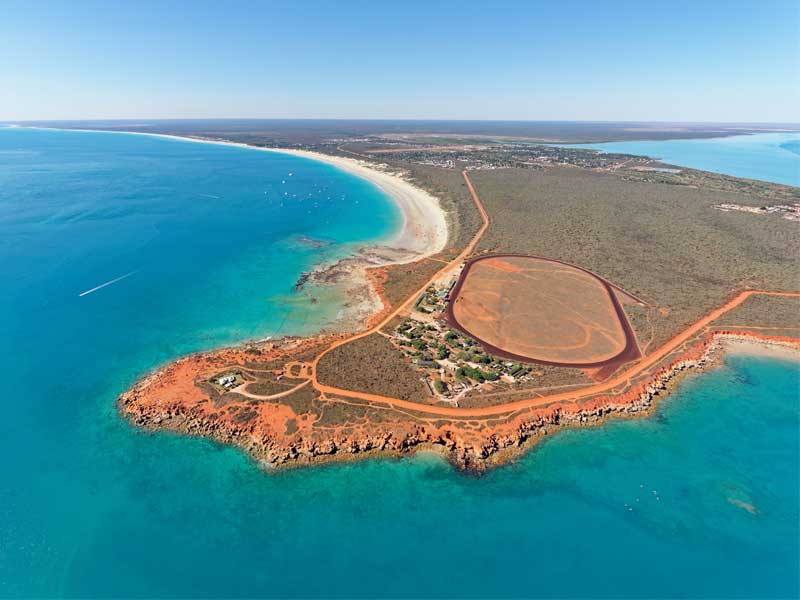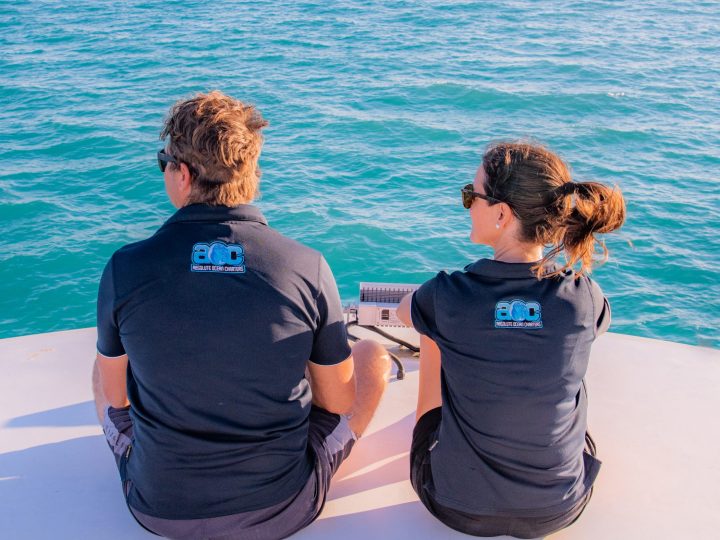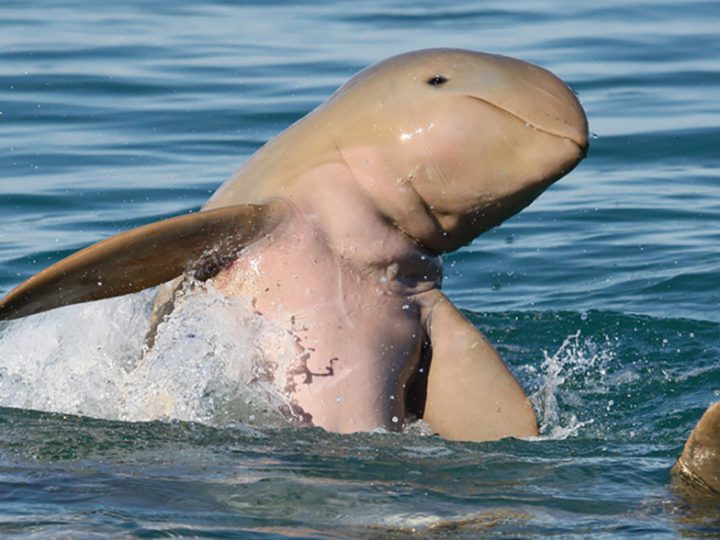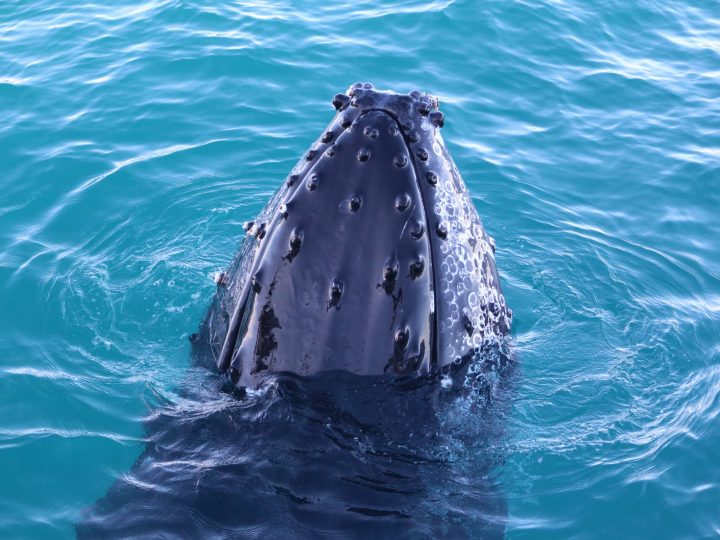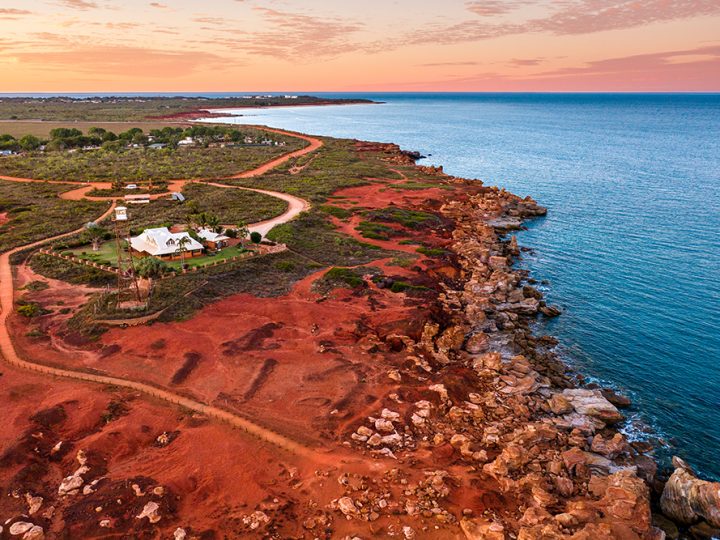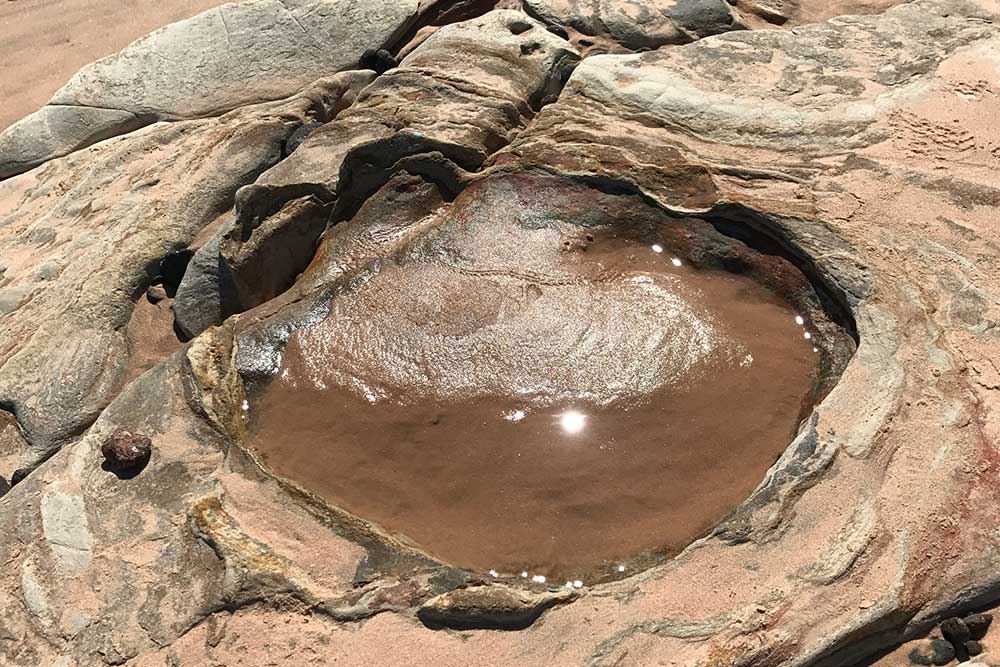
World-renowned for its rich history as a pearling town, Broome is a popular destination for holiday-makers seeking a relaxing, sunny vacation. But far beyond its history since humans first lived in the area some 27 thousand years ago, or since settlers moved in nearly 139 years ago, Broome also boasts evidence of life lived long before humans ever stepped foot on the earth.
All along the coast of Broome in Western Australia, fossilised dinosaur footprints can be found and explored. Scattered from Roebuck Bay to Gantheaume Point and Cable Beach, have a look at some of the history of the prints and the best times to get out and see them for yourself.
The History
To date, over 21 styles of dinosaur print have been documented in Broome, which is the most different prints recorded in one place anywhere in the world. And even as recently as July of 2021, more hidden dino tracks are still being discovered around Broome. The footprints prove dinosaurs roamed the tidal flats of Broome millions of years ago, leaving behind their tracks as a remaining sign of them long after.
The Indigenous people of Broome and the surrounding Kimberley areas have deep cultural connections to the tracks, with the footprints said to trace the journeys of their ancestors. The dinosaur tracks in Broome have a strong link to Aboriginal creation stories. You can learn more about the Yawuru people and the cultural significance of the dinosaur footprints of Broome on a local tour.
Learn more about Australia’s dinosaur fossils at the Broome Historical Museum. The Dinosaur Coast display includes a wealth of information about dinosaurs in the Broome area and the formation of the prints in the Broome sandstone.
How old are the dinosaur footprints in Broome?
The dinosaur footprints around Broome date back to approximately 130 million years ago! They are some of the oldest dinosaur tracks in Australia, and were formed all along the coastline during the early cretaceous period.
The Dinos
The prints at Broome prove that all the main groups of dinosaurs once inhabited Australia. The dinosaurs that walked along the coast of Broome all those millions of years ago included sauropod, thyreophora, ornithopod and carnivorous theropod varieties. Armoured ankylosaurus, stegosaurus, and Brontosaurus-type sauropods have been recorded to have existed in the area.
While some of the prints are just 12 centimetres across, others are up to a huge 1.7 metres in size, left behind by an enormous sauropod. Meat-eaters related to the well-known Tyrannosaurus have been discovered to have lived in Broome, thanks to the footprints they left behind for humans to later discover.
The tallest of the herbivorous sauropod family – the mighty Brachiosaurus – left impressions in the Broome sandstone, showing that the massive beast once roamed the Broome coastline.
For more info on the dinosaur fossils in Broome, check out the Dinosaur Coast Management Group. They are a not-for-profit organisation that helps protect the prints as well as educate the public about the importance of the dinosaur footprints in Broome. They have guides to help you identify tracks, as well as tours to teach the public about the cultural and scientific significance of Western Australia’s dinosaur fossils.
How are there still dinosaur footprints in Broome?
The mind boggles to try to fathom the passing of 130 million years – and yet, the dinosaur prints all around Broome are evidence of a time long since passed. When the dinosaurs walked through the tidal flats of the Dampier Peninsula they left footprints, just like we do when we walk through a muddy track. Over time, the footprints dried out, were hardened and filled with sand and small rocks. This allowed the footprints to be preserved in rock for millions of years, until erosion uncovered them and humans were able to spot them. This is why we are still uncovering newly discovered dinosaur prints as recently as 2021!
Where are they?
Dinosaur track sites have been discovered scattered across the coast of Broome. In fact, there is an 80-kilometre stretch of ‘dinosaur trackway’ across the Dampier Peninsula – an occurrence unparalleled to anywhere else in the world! Below are some of the best spots to find the prints around Broome, with hints for the best time to visit. But first, some important info about the tides on the coast of Broome.
What you need to know about tides?
The Kimberley Coast has the biggest tides in the southern hemisphere, with around a 10-metre difference between low and high tides. Low tide is required to see the dinosaur footprints, so make sure you study the tide charts in advance. Unsuspecting visitors can get caught by surprise by fast moving tides. To avoid disappointment when visiting the prints, make sure you know what time of day to visit to ensure the tide is at its lowest.
Gantheaume Point
Approximately 6km from the town centre of Broome is Gantheaume Point. The dinosaur prints can only be seen at low tide – and caution is necessary, as the rocks can be very slippery. There have been plaster casts of the prints made and embedded into rocks further up, so that if you visit during high tide or don’t want to walk on the slippery rocks, you can still get a look at some footprints. A tide of less than 2.16m is necessary to see the tracks at Gantheaume Point.
James Price Point
Situated 50km north of Broome, James Price Point is a good spot for those that have hired or have access to a car. The prints at James Price Point are easily accessible during low tide, and show theropod, ornithopod and sauropod tracks.
Cable Beach
Sand often covers the dinosaur footprints at Cable Beach, and they can only be seen at low tide. Again, it’s important to plan your visit around the tides, to ensure you aren’t disappointed and don’t get taken by surprise by the tide creeping in.
Reddell Beach
Much of the beach is covered by water at high tide, so low tide is again necessary to see the tracks at Reddell Beach. You will see prints from theropods and sauropods.
Best time of day to visit
Low tide generally occurs twice a day, so if you want to explore the dinosaur prints, make sure you plan your visit around the tides. The time of low tide is dependent on the day you visit as well as the time of year – so check online for up-to-date tidal charts before setting out.
Respect the sites
The dinosaur track sites on the Kimberley Coast have stood the test of time for over 130 million years, and must be protected for future generations. Please take care when visiting the tracks, as exposed rock layers can break off easily. Don’t drive on the tracks, be careful not to tread on the edges, and don’t remove sand from the footprints.
Due to the unparalleled diversity of the dinosaur footprints in Broome, the track sites were added to the West Kimberley National Heritage List in 2011, to help protect them.
What else to do in Broome?
The dinosaur coast of the Dampier Peninsula is a truly spectacular piece of history, and definitely worth some time on your next trip to the Kimberley region. But what are some other must-do’s when you visit Broome?
While you’re waiting for low tide so you can visit the dinosaur prints, get out for a swim at Cable Beach or go on a world-famous camel ride at sunset. While you’re tuned into the tidal charts, check out the flying boat wrecks left over from World War II. These can be seen at low tide at Roebuck Bay.
Some of the greatest sights Broome has to offer are out on the turquoise waters, where you can spot whales, unique snubfin dolphins, sea turtles and so much more. Find out more info about our whale watching charters and sunset cruises to see why so many visitors love exploring Broome from the water.

